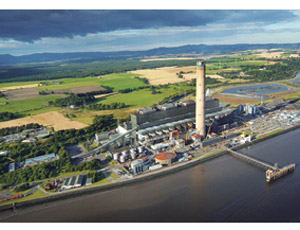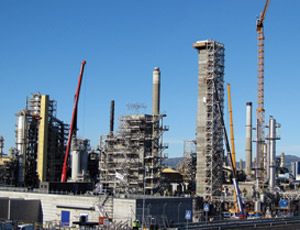The U.K.’s North Sea gas reserves are running out. But rather than let gas pipes go to waste, the national transmission network owner plans to use some of them to send carbon dioxide captured from a Scottish coal-fired powerplant for disposal in depleted offshore wells.


The project is part of a growing European effort to commercialize technologies that could allow the greening of coal burning. By mid-decade, the U.K. plans to have a commercial-scale carbon-capture and storage plant in operation. But by then, Norway is scheduled to have one of the world’s largest CCS test facilities online at a site north of Bergen.
“We think that by 2014 ... one of our pipes could be taken out of service and used for carbon dioxide,” says a spokesman for the U.K.’s National Grid, Warwick. The company is part of a team selected by the government as one of two consortiums to compete for funding for a commercial-scale plant.
Teams led by ScottishPower, Edinburgh, and E.ON U.K., Coventry, were short-listed in spring 2010 to compete for the funding. Both secured financial support from the Dept. of Energy and Climate Change for front-end engineering and design (FEED) work.
E.ON intended to make carbon-capture-ready one of four 400-MW generating units it was planning to build at its Kingsnorth site in Kent. However, in October the company shelved plans for the new units and withdrew from the competition, saying demand for electricity was not sufficient.
National Grid’s role on the sole remaining project, located in Scotland, is to develop a pipeline to its St. Fergus coastal terminal from one of ScottishPower’s 300-MW generating units at Longannet, west of Edinburgh. Consortium partner Shell Upstream Europe, Aberdeen, is figuring out ways of getting the gas from the coast to its offshore wells.
Under a recently signed contract, global environmental engineering consultant Amec is exploring the reuse of about 250 kilometers of existing pipes and laying a 21-km spur to the powerplant. The pipeline would carry up to two million tons of carbon dioxide a year. “This is the first project of its type in the U.K. and Europe on a scheme of this size,” says Clive White, vice president of Amec’s consulting and engineering business.
National Grid officials claim the proximity of the U.K.’s northern powerplants to North Sea oil and gas fields makes them good CCS candidates. CCS investment at Scottish and north English plants could eliminate up to 78 million tons of carbon dioxide annually, they estimate. The officials equate that quantity to half the emissions from all the country’s cars.
As part of its drive to commercialize CCS, ScottishPower in September committed about $8 million for five years of research at Edinburgh University and London’s Imperial College. CCS has “real potential” says Nigel Brandon, director of Imperial’s Energy Futures Lab. “But there remain ... technological, political and economic challenges to be overcome if this technology is to be widely adopted.”
To achieve CCS cost goals of $40 to $70 per ton of carbon dioxide by 2020 would require an investment of $18 billion from public and private sources, according to European Commission forecasts.
Among Europe’s big players is Norway, which retains huge offshore fossil-fuel reserves. To help enhance the reserves’ potential use in power generation, the Norwegian government is leading a joint venture that is two years away from completing a large facility to test two carbon-capture technologies at Mongstad, north of Bergen.
The roughly $890-million plant will be the world’s largest of its type, says Vegar Stokset, spokesman for the Technology Centre Mongstad. With a capacity to handle 100,000 tons of carbon dioxide annually, TCM will help test, verify and demonstrate post-combustion carbon-capture technologies for coal- and gas-fired plants. Separate carbon-capture technologies owned by Paris-based Alstom and Norway’s Aker Clean Carbon will be tested.
An important goal for TCM’s work is to drive down costs, says Stokset. “We want more full-scale plants being built worldwide,” he adds.
The government and the state energy company Statoil are contributing about 95% of TCM’s budget; the rest is being divided equally between A/S Norske Shell and South Africa’s Sasol.
TCM was ordered as a condition on Statoil’s proposal to build a 420-MW gas-fired cogeneration plant at the site, says Stokset. Statoil will decide in 2014 whether to proceed with the cogeneration unit, he adds. Expected to generate one million tons of carbon a year, the plant would be completed in 2018.




Post a comment to this article
Report Abusive Comment